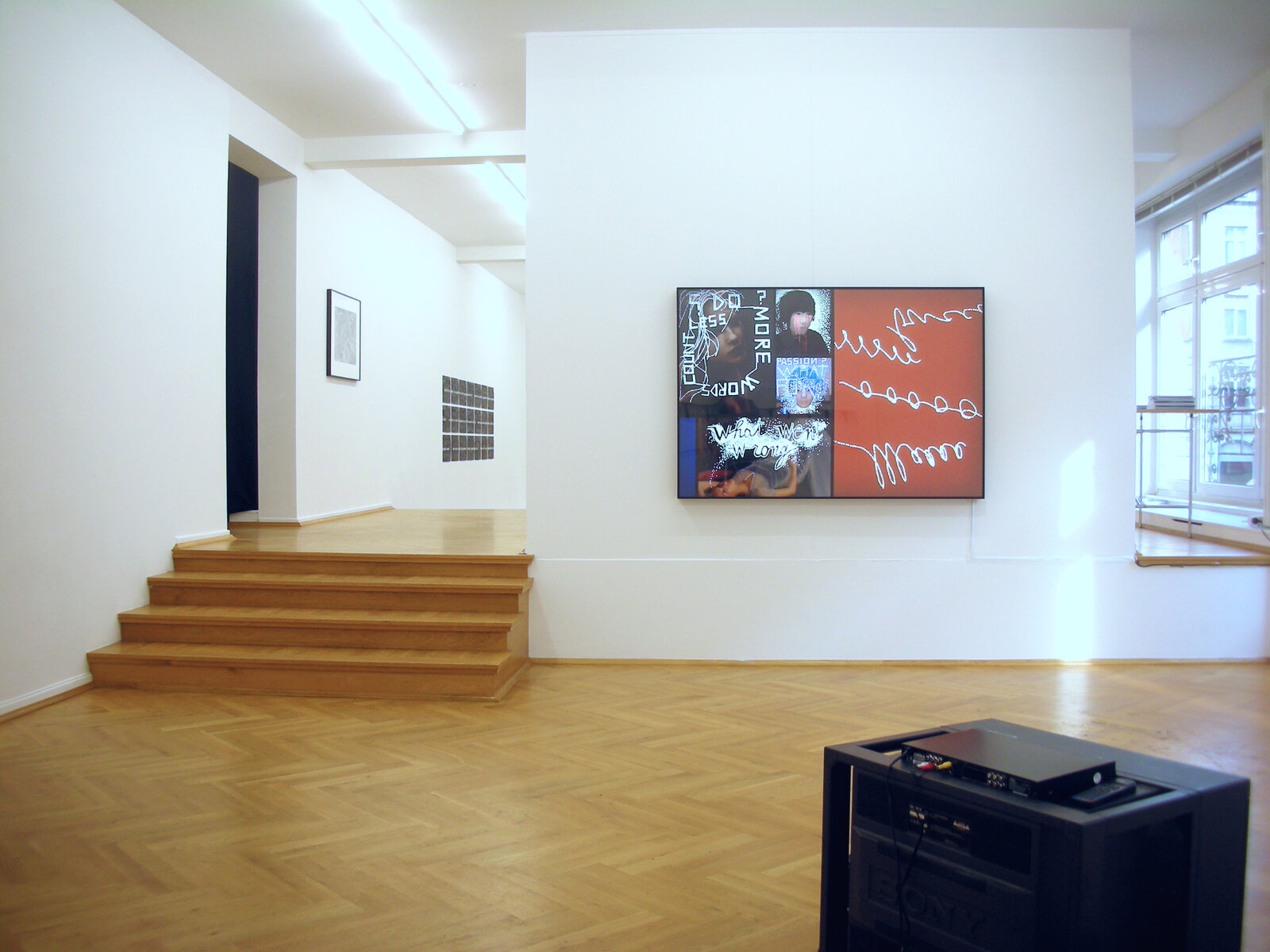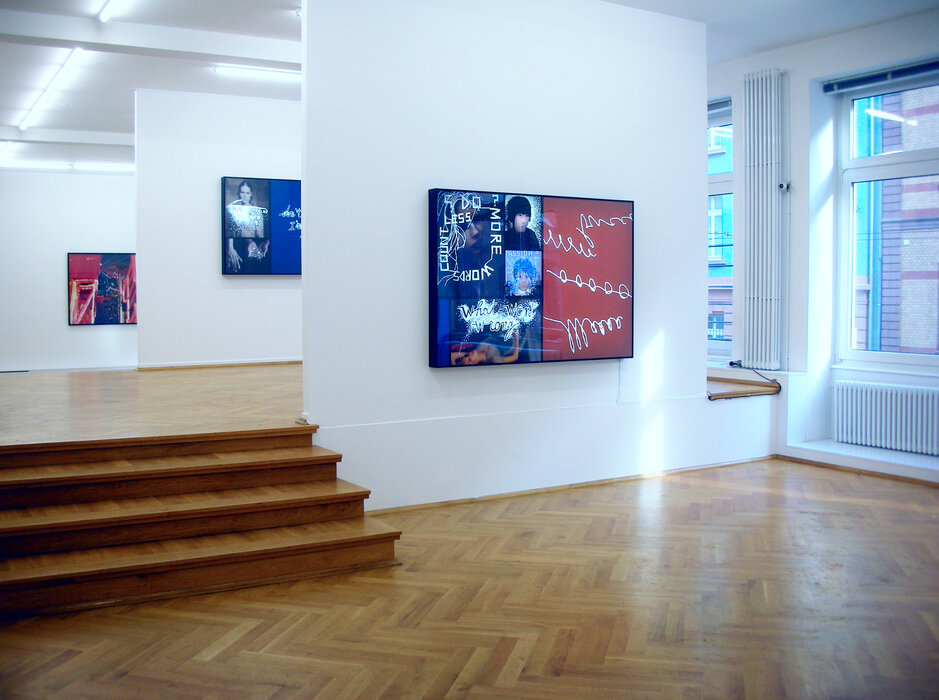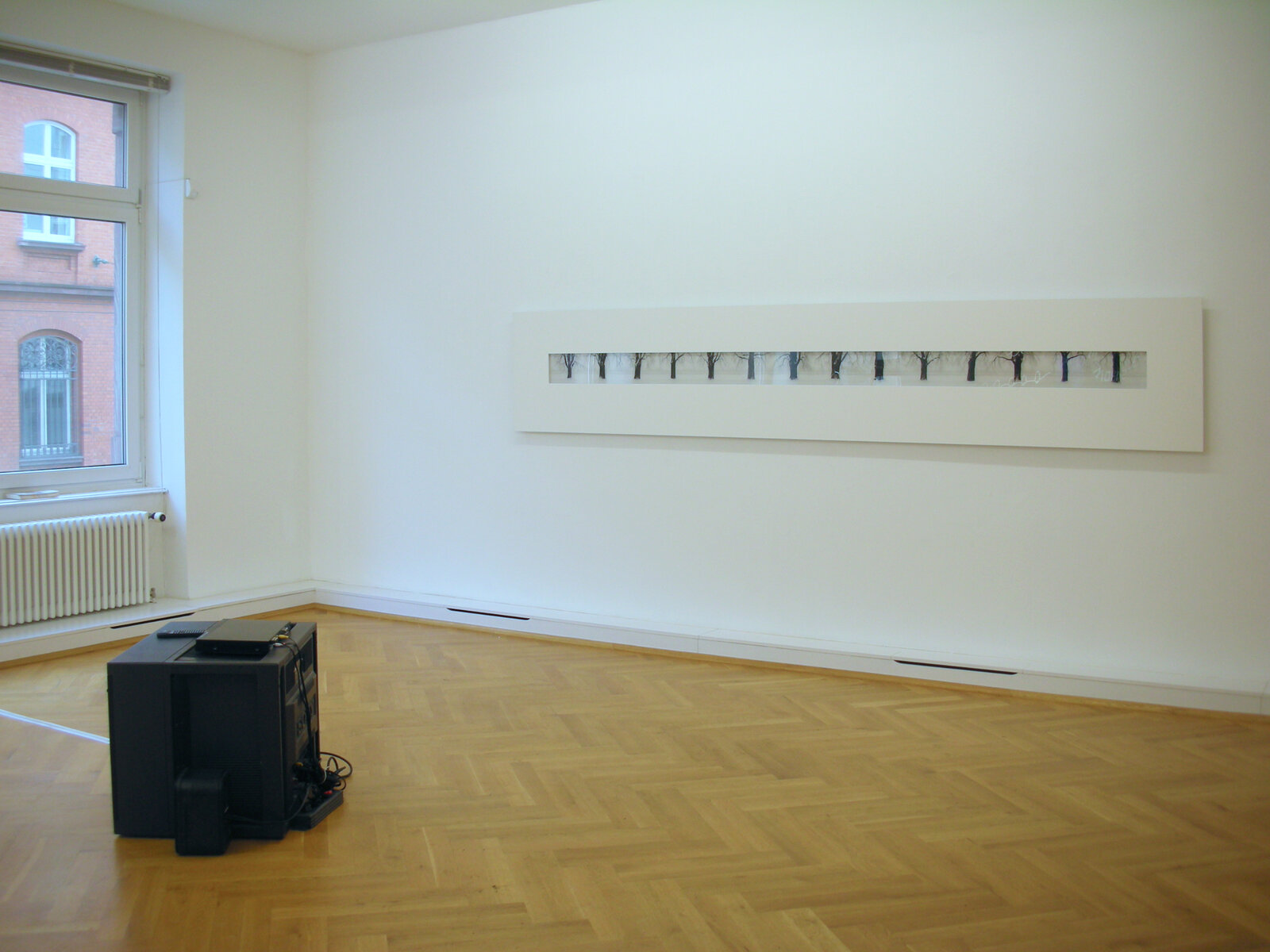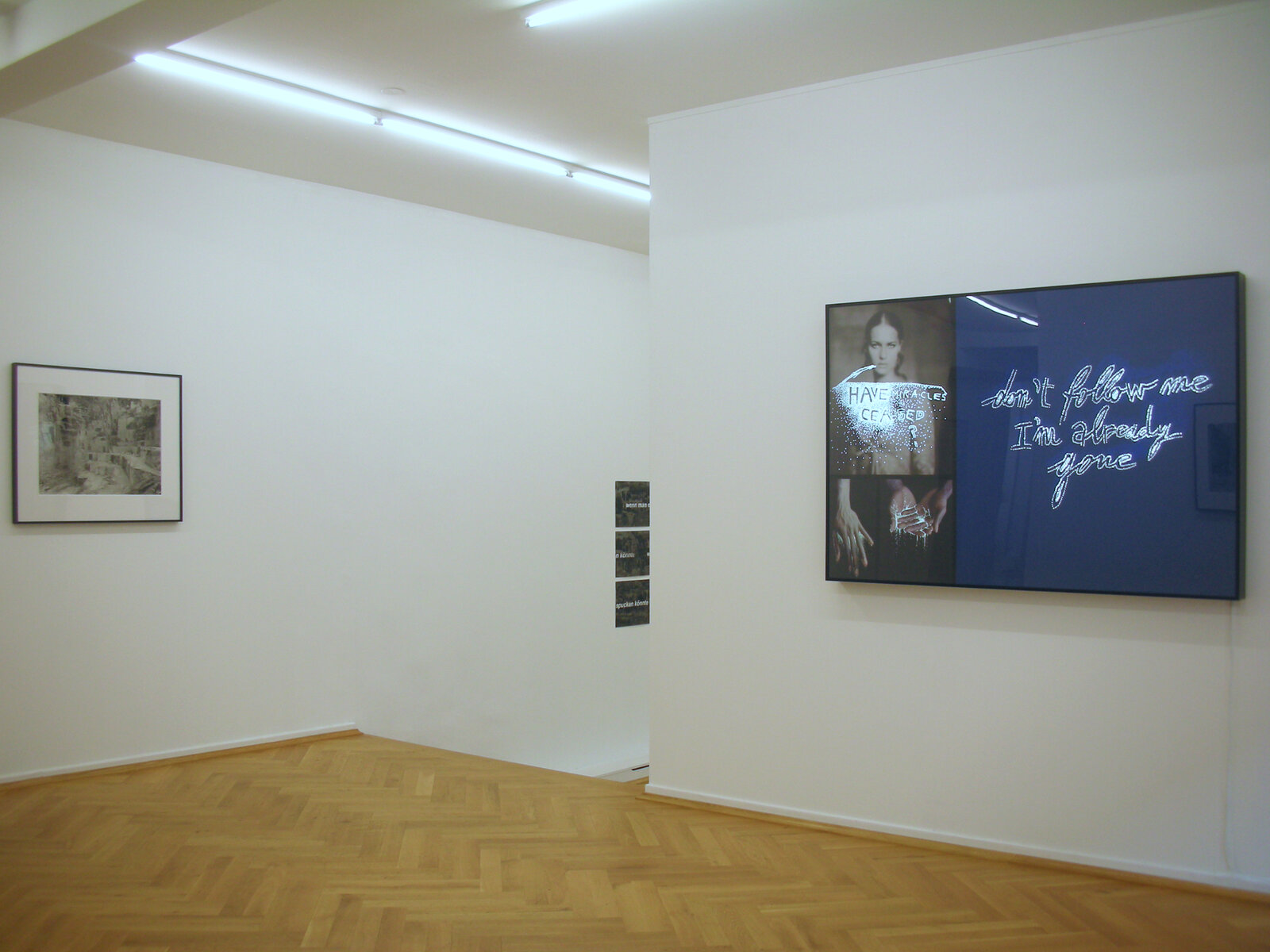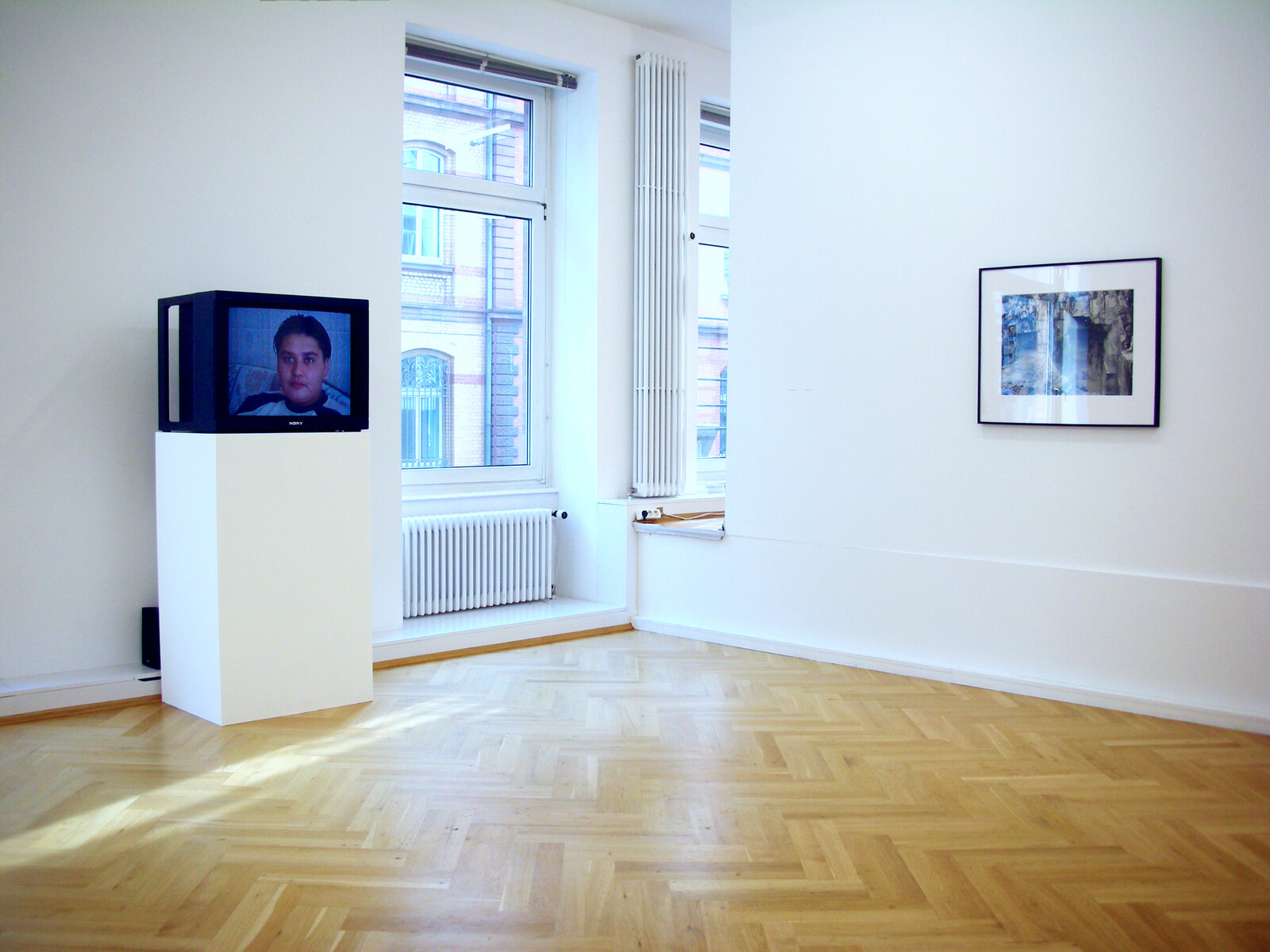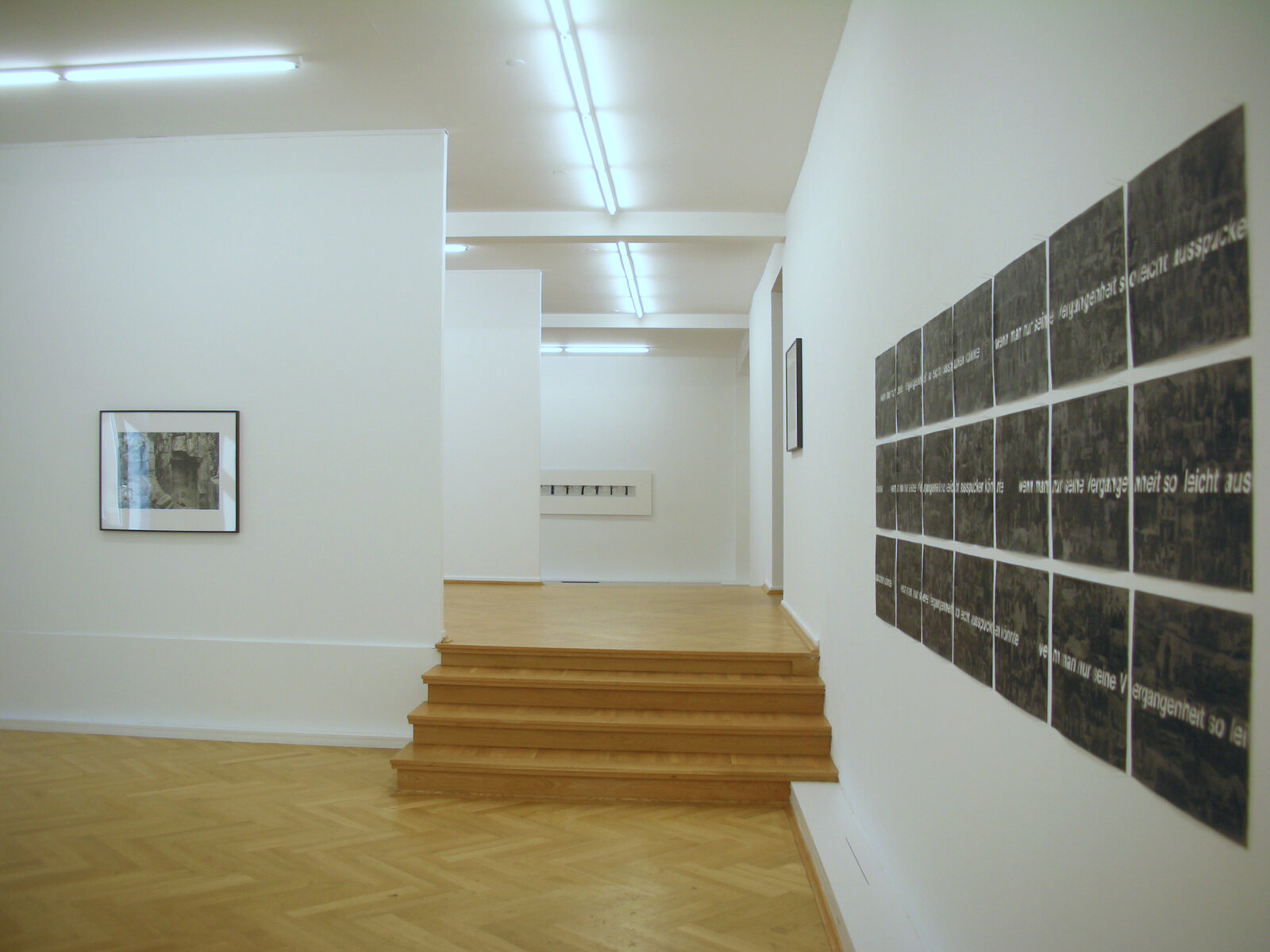Compilation
11.02. - 30.04.2010
Compilation / compilation is mostly used disparagingly in literature and science for "unscrupulously collating from other works". The term was first used mockingly by Cicero in his letters for a collection of files. In English, the term is more neutral, with compilation rather an anthology is meant, the connotation of plunder is missing, the idiom "scissors-and-paste job" is used for this. In the visual arts, compilation has only become a topic because of the diverse possibilities of technical transfer.
In the music industry, compilation is a collection of music tracks with a thematic connection. Another name is sampler or hit coupling. But a compilation is not sampling, because the compiler generally takes over the individual songs unchanged. Work is placed next to work, individual artistic position next to individual artistic position. Everyone who equips an MP3 player with titles is now his own compiler, or more generally, everyone who collects something and makes references makes compilations.
The starting point for the considerations for this exhibition was the novel Nadja by André Breton, of which the video Bolek by Tamara Grcic was reminiscent. The "unadorned" document, as Breton calls his work in the foreword, turns out to be the result of an ingenious compilation of perceptual impulses. In the fragments that one learns about Nadja, the appearance of Nadja is put together in the mind of the reader to form an image in which her identity and that of the author are mutually mirrored. The structure, which is no longer continuously narrative, and the use of photographs as references to reality give the whole thing an unsettling authenticity. Does the author, whose question asked at the beginning about his own identity always resonate in the text, exploit Nadja?
The intention of this exhibition is not an "alternative description" of the world (reconstruction), not a different point of view, but to show the relative security of our perception of the world and the intuitive knowledge of the viewer. In the way that reality is shown with the help of artistic methods, where our perceptual habits are attacked with discontinuous, asyntactic, unpredictable structures and we nevertheless construct our world as coherent in itself.
We understand the exhibition "Compilation" as the structure of an open compilation of works or groups of works by individual artists. At the same time, compilation is also a process that many artists use to present their works, but also as a production technique in their works or series of works to create open structures or structures with gaps.
In Tamara Gricic's video Bolek from 2000, the main character only seems to be interested in the effect it achieves in this new environment made possible by the film: discontinuous scraps of reality strung together, not sampling, impressions made through the structured joining and repetition of scraps generated, but rather an interactionist construct. No narrative thread is created here, but an open structure as an offer to the viewer to create his construct from what is presented to him. In her series Stills, the freely selectable placement of one shot next to another, the difference or similarity, creates a network of references, an intended juxtaposition.
Compared to the statements, Lawrence Weiner's video works are little known. He himself describes these as structures, constructed structures within which unconnected but simultaneous realities can develop. In addition to filmic or animated elements, visualizations or recitations of his own work can often take on an equal position. In his last video, WATER IN MILK EXISTS, 2008, he consciously juxtaposes artistic and pornographic conventions. With his black and white photographs, Peter Schlör creates realities that cannot be photographed in this way and also clearly show themselves as a manufactured image. They are images that reflect a personal experience, compiled from the movement in space, as we can otherwise only call them up in memory, as an experience from our own movement or change. Nadja has been Petra Wunderlich's favorite book for 30 years. Their marble quarries can be read as a metaphor for looting. But they are also open images, because they are only a snapshot. Another eruption of stone blocks can create a different picture at any time. It is difficult to guess the proportions in each case, but they are enormous - as the raw material of the most valuable sculptures. The two works shown by Daniele Buetti are obviously designed as a compilation - advertising beauties whose perfection could also turn out to be digitally idealized and thus pure appearance. They are perfect projection surfaces. Irritation is created by the visual (dis) disruption caused by inserted texts. However, there are actually gaps that allow the light from the space behind the pictures to radiate towards us as if from off-screen. Marcel Odenbach structures what is scattered through reproduction into images, the individual parts of which are familiar to us from the mass media. A space for the viewer and his memories is formed from references. In his work "Im Kreiselaufen" this reference is put into perspective again by cutting out the blank spaces when the sentence "If only one could spit out one's past so easily" is repeated endlessly and literally becomes language between the images. Ayse Erkmen's work is triggered by the change in perception due to the prior information on places that one intends to visit via the Internet. She used the intro of the Center d'art contemporain d'Ivry - le Crédac on the occasion of the exhibition "Variations continues" for her video work Hearts and Circles. It becomes an empty formula of attention and thus a reflection typical of her work, which aims to enable the viewer to grapple with the specific situation of an exhibition.
In the music industry, compilation is a collection of music tracks with a thematic connection. Another name is sampler or hit coupling. But a compilation is not sampling, because the compiler generally takes over the individual songs unchanged. Work is placed next to work, individual artistic position next to individual artistic position. Everyone who equips an MP3 player with titles is now his own compiler, or more generally, everyone who collects something and makes references makes compilations.
The starting point for the considerations for this exhibition was the novel Nadja by André Breton, of which the video Bolek by Tamara Grcic was reminiscent. The "unadorned" document, as Breton calls his work in the foreword, turns out to be the result of an ingenious compilation of perceptual impulses. In the fragments that one learns about Nadja, the appearance of Nadja is put together in the mind of the reader to form an image in which her identity and that of the author are mutually mirrored. The structure, which is no longer continuously narrative, and the use of photographs as references to reality give the whole thing an unsettling authenticity. Does the author, whose question asked at the beginning about his own identity always resonate in the text, exploit Nadja?
The intention of this exhibition is not an "alternative description" of the world (reconstruction), not a different point of view, but to show the relative security of our perception of the world and the intuitive knowledge of the viewer. In the way that reality is shown with the help of artistic methods, where our perceptual habits are attacked with discontinuous, asyntactic, unpredictable structures and we nevertheless construct our world as coherent in itself.
We understand the exhibition "Compilation" as the structure of an open compilation of works or groups of works by individual artists. At the same time, compilation is also a process that many artists use to present their works, but also as a production technique in their works or series of works to create open structures or structures with gaps.
In Tamara Gricic's video Bolek from 2000, the main character only seems to be interested in the effect it achieves in this new environment made possible by the film: discontinuous scraps of reality strung together, not sampling, impressions made through the structured joining and repetition of scraps generated, but rather an interactionist construct. No narrative thread is created here, but an open structure as an offer to the viewer to create his construct from what is presented to him. In her series Stills, the freely selectable placement of one shot next to another, the difference or similarity, creates a network of references, an intended juxtaposition.
Compared to the statements, Lawrence Weiner's video works are little known. He himself describes these as structures, constructed structures within which unconnected but simultaneous realities can develop. In addition to filmic or animated elements, visualizations or recitations of his own work can often take on an equal position. In his last video, WATER IN MILK EXISTS, 2008, he consciously juxtaposes artistic and pornographic conventions. With his black and white photographs, Peter Schlör creates realities that cannot be photographed in this way and also clearly show themselves as a manufactured image. They are images that reflect a personal experience, compiled from the movement in space, as we can otherwise only call them up in memory, as an experience from our own movement or change. Nadja has been Petra Wunderlich's favorite book for 30 years. Their marble quarries can be read as a metaphor for looting. But they are also open images, because they are only a snapshot. Another eruption of stone blocks can create a different picture at any time. It is difficult to guess the proportions in each case, but they are enormous - as the raw material of the most valuable sculptures. The two works shown by Daniele Buetti are obviously designed as a compilation - advertising beauties whose perfection could also turn out to be digitally idealized and thus pure appearance. They are perfect projection surfaces. Irritation is created by the visual (dis) disruption caused by inserted texts. However, there are actually gaps that allow the light from the space behind the pictures to radiate towards us as if from off-screen. Marcel Odenbach structures what is scattered through reproduction into images, the individual parts of which are familiar to us from the mass media. A space for the viewer and his memories is formed from references. In his work "Im Kreiselaufen" this reference is put into perspective again by cutting out the blank spaces when the sentence "If only one could spit out one's past so easily" is repeated endlessly and literally becomes language between the images. Ayse Erkmen's work is triggered by the change in perception due to the prior information on places that one intends to visit via the Internet. She used the intro of the Center d'art contemporain d'Ivry - le Crédac on the occasion of the exhibition "Variations continues" for her video work Hearts and Circles. It becomes an empty formula of attention and thus a reflection typical of her work, which aims to enable the viewer to grapple with the specific situation of an exhibition.
